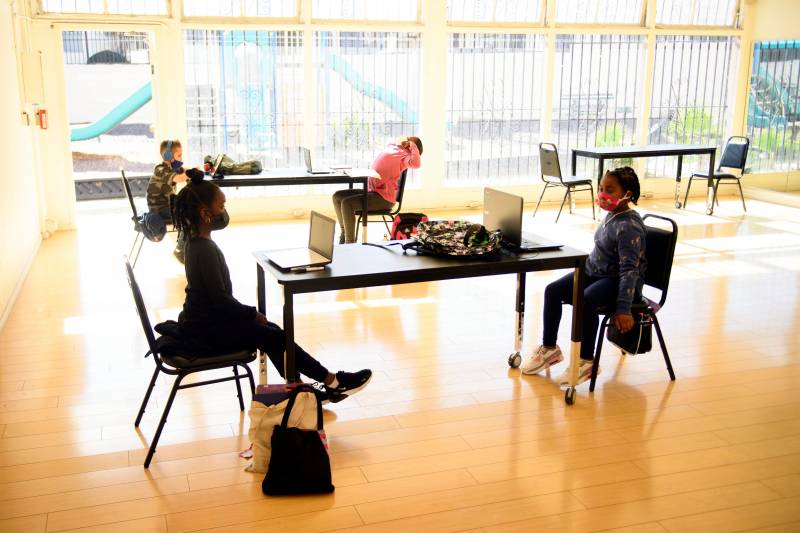Gone, too, are previous proposed requirements for districts to send the state a ratified collective bargaining plan with local teachers unions before reopening — though those unions will still have a powerful voice in local decision making.
And in an effort to placate the unions, the legislation addresses their most controversial demand: that teachers receive vaccines before returning to class. The bill does not require school staff to be vaccinated or offered vaccines, but it does codify Newsom's promise that 10% of the state's doses will be reserved for education workers.
"Today’s proposed agreement includes the multi-tiered safety measures educators have been calling for," said California Teachers Association President E. Toby Boyd, in a statement. "It recognizes community transmission rates and the importance of prioritizing educators for the COVID-19 vaccine before reopening for in-person instruction. We commend the governor and the Legislature for recognizing those concerns."
The deal also comes with a stricter timeline than those floated since December, when Newsom first unveiled a framework to resume in-person instruction.
If the deal is enacted, districts have three weeks to post a reopening plan. Then, starting April 1, each district's portion of the $2 billion will drop by 1% for each day that in-person instruction is not offered.
Districts that fail to open classrooms by May 15 will forfeit their share of the $2 billion.
It remains to be seen if the incentives will move the needle for districts that have so far eschewed a return to classroom instruction, as the plan places no direct requirement on districts to do so.
The San Francisco Unified School District is currently negotiating a return of grades K-2, but if the county moves into the state's red tier, they will be required to bring back older children or risk losing state funds.
"Based on what they've currently agreed to, they don't meet the reopening guidelines," said Assemblyman Budget Chair Phil Ting, D-San Francisco. "I'm hoping that this [deal] will spur them to do that."
Parents advocating for more widespread school openings were disappointed in the plan's narrow focus on elementary school students.
"What's particularly disturbing to this mom of a middle schooler and a high schooler is it completely leaves those kids out," said Pat Reilly, a Democratic consultant and parent advocate for the group OpenSchoolsCA.
Reilly added, "We are nearly two weeks away from being locked out of our schools for nearly a year, more than any other place in the United States and kids are suffering and parents are suffering, particularly women and moms."
Newsom and state lawmakers are betting that the windfall of cash available to schools (a reflection of how wealthy California taxpayers thrived during the pandemic) will loosen the schoolhouse doors.
Independent of the reopening grants, more than $4.5 billion will be available to districts across the state. That money will be apportioned based on enrollment and the state's local control funding formula, but 85% must be spent on in-person learning, potentially on initiatives like summer school to make up for learning loss.
"We cannot turn the clock back and make up the time that our kids, our young people have lost," said Senate President Pro Tem Toni Atkins, D-San Diego. "So we’re going to have to make up for that in a different way and that’s part of what some of this funding can do."
Superintendent Adam Clark of the Mount Diablo Unified School District applauded the funding for summer instruction that could help kids catch up after so many months out of the classroom.
"To be able to do widespread summer school for students and provide interventions and to provide enrichment and counseling services, that is a plus, and that will do nothing but help our students," Clark said.

